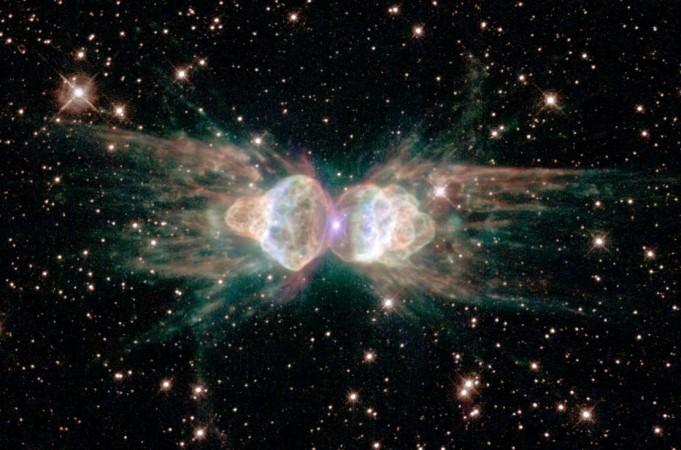
Two beams of laser light are coming at Earth from the massive Ant Nebula and this could mean that there might be a double star system hiding within the cluster.
A blast of laser like this normally comes from a dying star, reports the ESA. The laser was reportedly first spotted by European Space Agency's (ESA) Herschel space observatory. This effect, explains the report, is explained as a result of smaller stars, much like the Sun shedding gasses and dust from their outer layers into space as they begin to die and start transforming into dense, white dwarf stars.
Material and radiation is spilled into the galaxy, it creates a kaleidoscope like effect that is visible across the universe. Scientists are now coming to realise that this event could be a lot more dramatic than once thought. Among the radiation that is thrown out by dying stars, powerful laser beans are also a part of it, according to these new findings.
As for the laser seen by the ESA, the only thing about the beams that is known is that comes from the Ant Nebula. Researchers are speculating that a twin star system is dying in the middle of the nebula, called Menzel 3, after the astronomer who discovered it. He is also reported to have suggested that lasers can come out of dying stars.
"When we observe Menzel 3, we see an amazingly intricate structure made up of ionized gas, but we cannot see the object in its centre producing this pattern," says Isabel Aleman, lead author of a paper describing the new results.
"Thanks to the sensitivity and wide wavelength range of the Herschel observatory, we detected a very rare type of emission called hydrogen recombination line laser emission, which provided a way to reveal the nebula's structure and physical conditions."
The idea that it is a twin star system comes from the way mass is being consumed just as it gets ejected by one of the dying stars. Normally, the gas and other dying star material is thrown out dramatically.
While one might come to expect a massive light show like in a concert, space lasers fire off at different wavelengths and might not be readily visible. Only a few such space lasers have been detected so far, Explains ESA.

















